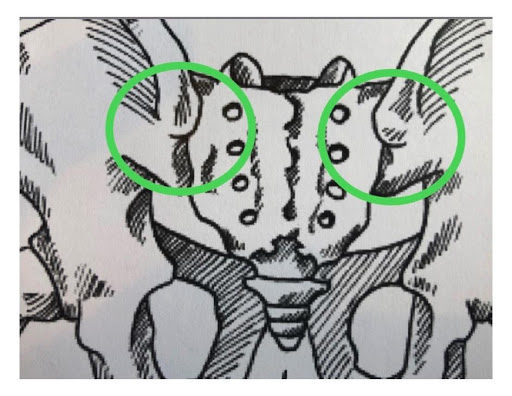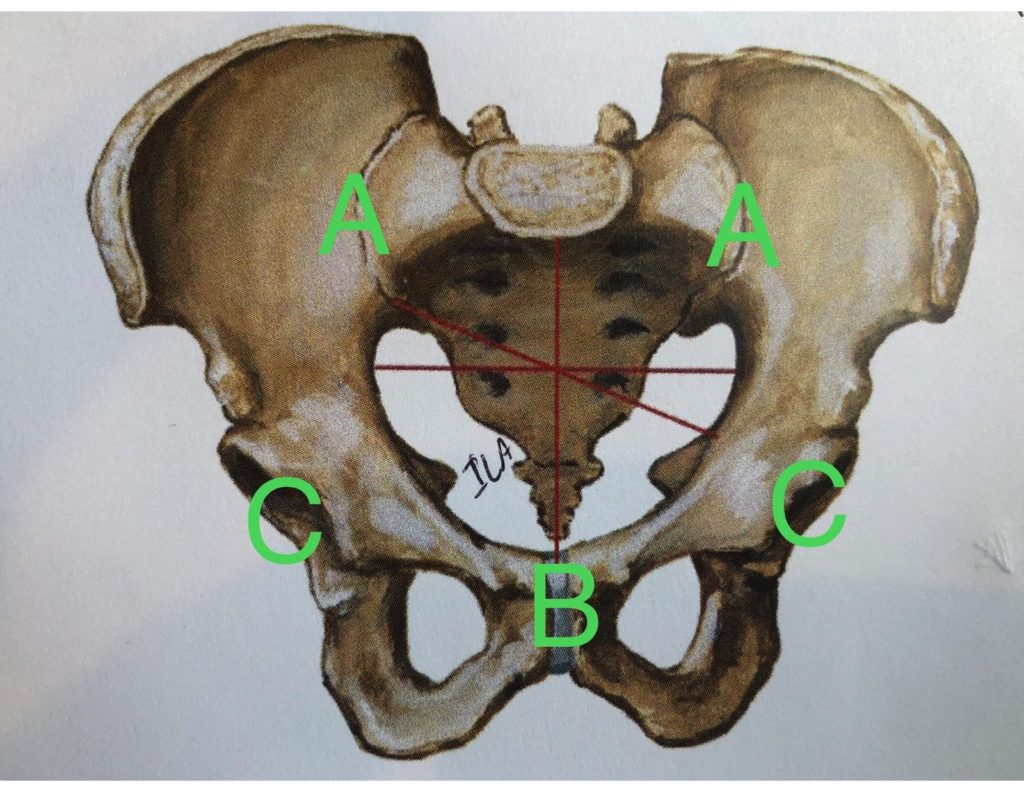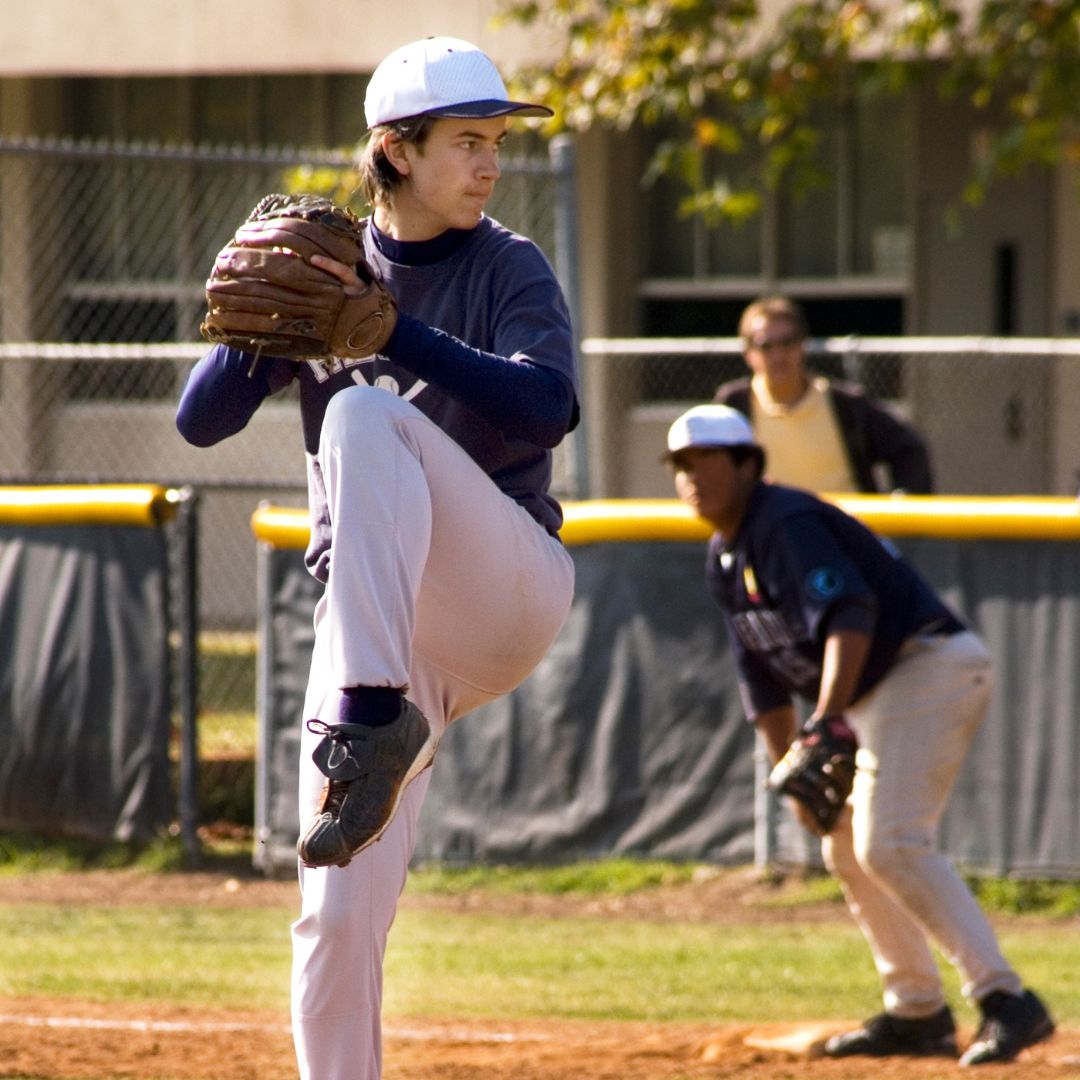Background:
Have you ever had a nagging pain in your low back, hip, knee, ankle or foot that has persisted or come and gone over the years but hasn’t fully resolved? Your source of pain could possibly be coming from a place that you don’t even know about and is commonly overlooked; a place that many clinicians are wary to evaluate and treat – The Sacroiliac Joint (SIJ).

The most commonly under-diagnosed joint in the body is the SIJ. Our Smithtown and Selden providers at Block Sports Chiropractic & Physical Therapy include a look at the pelvis and SIJ during our exams. It is very important to use a systematic approach to finding dysfunctions of the pelvic girdle and treating them, as they can commonly cause symptoms similar to low back pain, hamstring pulls or sciatica pain. Below we will touch on the anatomy, some common dysfunctions we come across in our Smithtown, NY and Selden, NY clinics and some useful tips for managing symptoms.
Anatomy:

The pelvic girdle is comprised of the (2) Os Coxa bones that meet at the “key stone” sacrum. The joints that are important during this discussion are the (A) sacroiliac, (B) pubic symphysis, and (C) hip joints. The function of the pelvic girdle is to transmit force from the upper body/trunk down to the lower extremity along with transmitting force from the ground up. In layman’s terms, the pelvis receives all the stresses during all our every day tasks (walking, jumping, lifting, bending, running, falling, etc.) and smooth it out. It seems that everyone that steps foot in our clinic at Block Sports Chiropractic & Physical Therapy has some sort of dysfunction at the pelvis that can be addressed. This is due to everyday work stresses, poor postures, trauma, and the repetitive nature of our current society.
It is common during the force dissipation that abnormal movement occurs at the pelvis causing asymmetries and poor alignment. Over time with such chronic malposition of the pelvis, muscles can become inhibited (turned off). Inhibition can cause increased stresses to certain areas of the lumbar spine, hip or knee joints, and in some cases all the way up to the shoulder. This is why we need to take a deep look at the position of our pelvis and identify any dysfunctions.
As previously stated, the SIJ is very complex. It is a very strong and stable joint due to its vast amount of tendon and ligament attachments. See below for important ligaments and muscles attaching to the sacrum.
Ligament attachments to the sacrum:
| Ligaments | Function |
| Sacrotuberous | Flexion of sacrum, posterior rotation of sacrum |
| Illiolumbar | Flexion of sacrum, posterior rotation of sacrum |
| Sacrospinous | Stabilizes lumbosacral joint, bridge between iliac crest and transverse process of L5 |
Muscle attachments to the pelvis: (note: not all attachments, most commonly affected in the clinic)
| Latissimus Dorsi Thoracolumbar FasciaExternal and Internal Oblique Multifidi Quadratus Lumborum Erector Spinae Quadratus Femoris | Transverse Abdominis Piriformis Gluteus Minimus and Medius Superior Gemellus Iliacus Psoas Biceps femoris |
Dysfunctions:
Through our thorough examinations of the lumbar spine, pelvis, SIJ and hips, we have come up with the most common dysfunctions found at Block Sports Chiropractic & Physical Therapy. Below are common pelvic girdle dysfunctions we come across and would like to inform you about.
| Description | Treatment | |
| Superior/Inferior Pubic Rami | Findings: Pubic Tubercle up/down Common seen in: Pregnancy, Trauma, Leg length discrepancies | Muscle Energy Techniques Myofascial Release Mobilizations/ManipulationsCore Stabilization Pelvic floor retraining Hip strengthening |
| Anterior/Posterior Pubic Rami | Findings: Pubic Rami deep/shallow Common seen in: Pregnancy, Trauma, Leg length discrepancies | Muscle Energy Techniques Myofascial Release Mobilizations/ManipulationsCore Stabilization Pelvic floor retraining Hip strengthening |
| Downslip/Upslip Illium | Findings: Iliac crest sup/infASIS and PSIS both inf or superior Common seen in: Trauma, Stepping off curbs, Wallets in pocket, Prolonged crossed legs, Long duration poor sitting postures, Long duration non weight bearing | Muscle Energy Techniques Myofascial Release Mobilizations/ManipulationsCore Stabilization Pelvic floor retraining Hip strengthening |
| Outflare/Inflare Ilium | Findings: Ilium is positioned medial or lateral to umbilicus Common seen in: Postural dysfunctions | Muscle Energy Techniques Myofascial Release Core Stabilization Pelvic floor retraining Hip strengthening |
| Anterior / Posterior Rotated Ilium | Findings: ASIS or PSIS anterior or posterior Common seen in: Over pronators, Decreased ankle mobility, Decreased hamstring flexibility, Trauma, Repetitive flex/ext of lumbar spine | Muscle Energy Techniques Myofascial Release Core Stabilization Pelvic floor retraining Hip strengthening Ankle mobility Foot posture correction |
| Forward/Backward Rotated Sacrum | Findings: SACRAL TORSIONS SUCH ASL on L, R on R, R on L, L on R Common seen in: Unilateral athletes (baseball, soccer, lacrosse, etc.), Posture dysfunctions Repetitive unilateral movements | Muscle Energy Techniques Myofascial Release Core Stabilization Pelvic floor retraining Hip strengthening |
| Bilat/Unilat flex/extended sacrum | Findings: R or L side of the sacrum unilaterally stuck at the Base/ILA. Common seen in: Shortened hamstring, Piriformis syndrome | Muscle Energy Techniques Myofascial Release Core Stabilization Pelvic floor retrainingHip strengthening |
How can Block Sports Chiropractic & Physical Therapy providers help?
Our team utilizes hands on evidence-based treatments including muscle energy techniques, mobilizations, and soft tissue/myofascial release techniques to correct the above dysfunctions. At Block Sports Chiropractic & Physical Therapy, correcting the dysfunction is just the beginning. It is common to have a patient follow up next visit with the return of dysfunction or malposition. It is crucial that following our hands-on correction we follow up with corrective exercises in the newly achieved ROM and movement patterns. Motor control is the key after we correct the pelvis. A strong Home Exercise Program (HEP) including specific targeted core stabilization exercise/ neuromuscular re-education exercise will help with the carryover and prevention of future injuries/pain.
What can YOU do?
Some things that YOU can change to reduce the risk of SIJ dysfunction and maintain healthy pelvic alignment include:
- Avoid having a wallet in your back pocket while sitting for prolonged periods
- Avoid carrying heavy purses /bags over your shoulders (especially over one shoulder)
- Avoid carrying backpacks over one shoulder/ keep them <5 lbs
- Avoid crossing your legs for extended periods of time
- Avoid poor driving/workstation/sitting postures (keep in mind to keeping both feet on the ground and hips at 90 degrees with good lumbar support)
All of these are common habits the general population often have that create muscle and postural imbalances. These imbalances can create the SIJ dysfunctions stated above. When performed chronically, these imbalances can take longer to correct and heal.
If you are still experiencing pain and getting minimal relief on your own, call or stop by one of our offices in Smithtown or Selden, NY for a thorough examination. Our physical therapist and chiropractors at Block Sports Chiropractic & Physical Therapy are highly trained to assess the sacrum-pelvis-lumbar regions.




